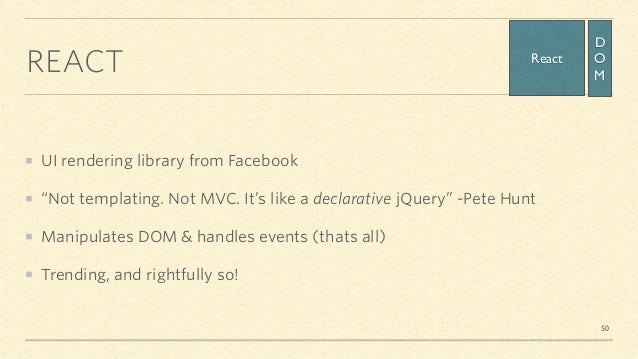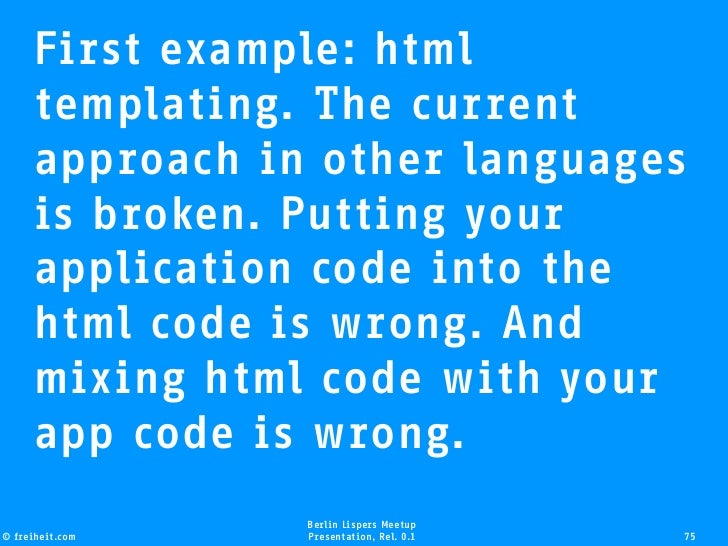Web Development With Clojure 2Nd Edition

Web and mobile developers have significantly less professional coding experience, on average, than developers in other technical disciplines such. Download Crack War Of The Ring.
- Download free C++ eBooks in pdf format or read C++ books online.
- The Non-Designer's Presentation Book: Principles for Effective Presentation Design, 2nd Edition. Robin Williams, teacher and designer, knows what it takes to give a.
- Free-programming-books - :books: Freely available programming books.
- Eclipse was inspired by the Smalltalk-based VisualAge family of integrated development environment (IDE) products. Although fairly successful, a major.
- Programmer forums, Software Development, Web Development, developer resources, coding answers, blogs, articles, for programmers in ASP NET, C#, Visual Basic, Java.
- Register for an account with Packt: helping the world put software to work in new ways. Don't forget to sign up for our Deal of the Day!
- Python is a versatile language that has found.
Eclipse (software) - Wikipedia. Eclipse. Welcome screen of Eclipse 4. Neon. Developer(s)Eclipse Foundation. Initial release. 1. November 2. 00. 1; 1. Eclipse is written mostly in Java and its primary use is for developing Java applications, but it may also be used to develop applications in other programming languages via plug- ins, including Ada, ABAP, C, C++, C#, COBOL, D, Fortran, Haskell, Java.
Welcome to the NetBeans Plugin Portal. Download, comment, and rate plugins provided by community members and third-party companies, or post your own.
Script, Julia. It can also be used to develop documents with La. Te. X (via a Te. Xlipse plug- in) and packages for the software Mathematica. Development environments include the Eclipse Java development tools (JDT) for Java and Scala, Eclipse CDT for C/C++, and Eclipse PDT for PHP, among others. The initial codebase originated from IBM Visual. Age. Users can extend its abilities by installing plug- ins written for the Eclipse Platform, such as development toolkits for other programming languages, and can write and contribute their own plug- in modules. Since the introduction of the OSGi implementation ( Equinox) in version 3 of Eclipse, plug- ins can be plugged- stopped dynamically and are termed (OSGI) bundles.
Instead, all code for a project was held in a compressed lump (somewhat like a zip file but in a proprietary format called . Individual classes could not be easily accessed, certainly not outside the tool. A team primarily at the IBM Cary NC lab developed the new product as a Java- based replacement. It is estimated that IBM had already invested nearly $4. In January 2. 00. Eclipse Foundation was created. The Free Software Foundation has said that both licenses are free software licenses, but are incompatible with the GNU General Public License (GPL).

The versions named after Callisto, Europa, and Ganymede, which are moons of Jupiter, were followed by a version named after Galileo the discoverer of those moons. These were followed by two sun- themed names, Helios of Greek mythology, and Indigo, one of the seven colors of a rainbow (which is produced by the sun). The version after that, Juno, has a triple meaning: a Roman mythological figure, an asteroid, and a spacecraft to Jupiter.
Photon represents a return to sun- themed names. Releases. Its runtime system is based on Equinox, an implementation of the OSGi core framework specification.
The plug- in architecture supports writing any desired extension to the environment, such as for configuration management. Java and CVS support is provided in the Eclipse SDK, with support for other version control systems provided by third- party plug- ins.
With the exception of a small run- time kernel, everything in Eclipse is a plug- in. Thus, every plug- in developed integrates with Eclipse in the same way as other plug- ins; in this respect, all features are . Examples of plug- ins include for Unified Modeling Language (UML), for Sequence and other UML diagrams, a plug- in for DB Explorer, and many more. The Eclipse SDK includes the Eclipse Java development tools (JDT), offering an IDE with a built- in Java incremental compiler and a full model of the Java source files.
This allows for advanced refactoring techniques and code analysis. The IDE also makes use of a workspace, in this case a set of metadata over a flat filespace allowing external file modifications as long as the corresponding workspace resource is refreshed afterward. Eclipse implements the graphical control elements of the Java toolkit called Standard Widget Toolkit (SWT), whereas most Java applications use the Java standard Abstract Window Toolkit (AWT) or Swing. Eclipse's user interface also uses an intermediate graphical user interface layer called JFace, which simplifies the construction of applications based on SWT.
Eclipse was made to run on Wayland during a Google Summer of Code (GSo. C) Project in 2. 01. The following components constitute the rich client platform: Examples of rich client applications based on Eclipse are: Server platform. It supports remote debugging, allowing a user to watch variables and step through the code of an application that is running on the attached server.
Web Tools Platform. It includes source and graphical editors for a variety of languages, wizards and built- in applications to simplify development, and tools and APIs to support deploying, running, and testing apps. All are compatible with the Eclipse Modeling Framework created by IBM. Those projects are separated in several categories: Model Transformation, Model Development Tools, Concrete Syntax Development, Abstract Syntax Development, Technology and Research, and Amalgam. Model Transformation projects uses Eclipse Modeling Framework (EMF) based models as an input and produce either a model or text as an output. Model to model transformation projects includes ATLAS Transformation Language (ATL), an open source transformation language and toolkit used to transform a given model or to generate a new model from a given EMF model. Model to text transformation projects contains Acceleo, an implementation of MOFM2.
T, a standard model to text language from the Object Management Group (OMG). The Acceleo code generator can generate any textual language (Java, PHP, Python, etc.) from EMF based models defined with any metamodel (Unified Modeling Language (UML), Systems Modeling Language (Sys. ML), etc.). It is open- source. Model Development Tools projects are implementations of various modeling standards used in the industry, and their toolkits. Among those projects can be found implementations of several standards: The Concrete Syntax Development project contains the Graphical Modeling Framework, an Eclipse- based framework dedicated to the graphical representation of EMF based models. Valable is a Vala plug- in for Eclipse.
The project encompasses all development components, including code- completion, develop PHP and facilitate extensibility. It leverages the existing Eclipse Web Tools Platform (WTP) and Dynamic Languages Toolkit (DLTK). ADT extends the abilities of Eclipse to let developers set up new Android projects, create an application UI, add packages based on the Android Framework API, debug their applications using the Android SDK tools, and export signed (or unsigned) . It is freely available to download. It was the official IDE for Android but was replaced by Android Studio (based on Intelli.
J IDEA Community Edition). Archived from the original on 3. May 2. 01. 2. Retrieved 5 September 2.
Eclipse. org. The Eclipse Foundation. Retrieved 5 March 2. Eclipse Wiki. Retrieved 1.
March 2. 00. 8. Archived from the original on 1. October 2. 00. 8. Building a Smarter Planet. Retrieved 3 November 2.
Retrieved 1 January 2. The Eclipse Foundation. Retrieved 1. 3 August 2.
The Eclipse Foundation. Retrieved 2. 5 June 2.
Association for Computing Machinery. Retrieved 2. 6 April 2. Retrieved 2. 4 February 2. Free Software Foundation. May 2. 00. 7. Retrieved 2. May 2. 00. 7. Taft (2.
May 2. 00. 5). Ziff Davis Enterprise Holdings. Retrieved 1. 1 August 2. Retrieved 4 July 2. Eclipse. org. 2. 1 June 2. Retrieved 1. 6 June 2. Retrieved 1 February 2. Eclipsepedia. Retrieved 1 February 2.
Eclipsepedia. Retrieved 1 February 2. Eclipsepedia. Retrieved 1 February 2.
Eclipsepedia. Retrieved 1 February 2. Eclipsepedia. Retrieved 1 February 2. Eclipse. org. 2. 7 June 2.
Retrieved 1. 6 June 2. Eclipsepedia. Eclipsepedia.
Retrieved 1 February 2. Eclipsepedia. Retrieved 1 February 2. Eclipsepedia. Retrieved 4 April 2. Eclipsepedia. Retrieved 2.
April 2. 01. 4. Eclipsepedia. Retrieved 2 February 2.
Eclipsepedia. Retrieved 7 March 2. OSGi Alliance Site. Retrieved 2 August 2. Retrieved 1 January 2. August 2. 01. 4. Retrieved 2 May 2. The Eclipse Web Tools Platform (WTP) project extends the Eclipse platform with tools for developing Web and Java EE applications. It includes source and graphical editors for a variety of languages, wizards and built- in applications to simplify development, tools to support deploying, running, and testing apps, and APIs for extending its functionality.
Retrieved 5 March 2. Retrieved 1 January 2. Android Developers Blog. Retrieved 2. 5 March 2.
Register For An Account . Sent maximum once weekly.